6 Best Ways of Coffee Brewing According to Café Baristas Around the World
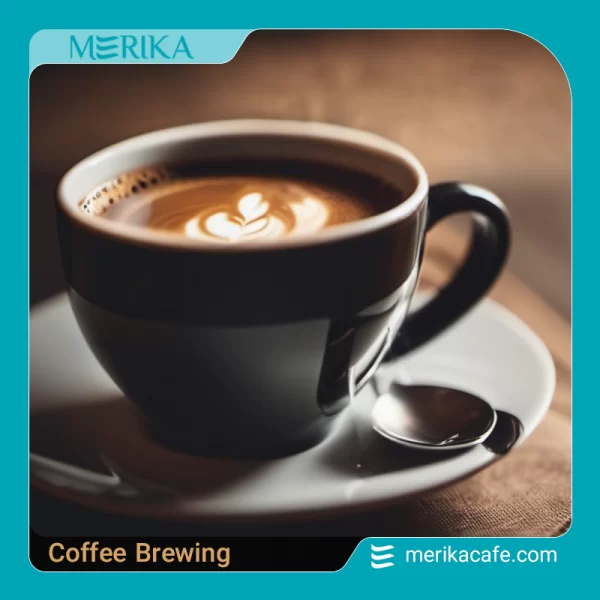
What are the primary ways of coffee Brewing perfectly when you need a real one? Especially with outgrowing plantations, the demand for high-quality coffee has increased. Also, the technology of the third and fourth waves of coffee servings has improved, which has helped elevate the expectations of coffee enthusiasts and baristas.
Beyond the household automatic coffee maker, here are six popular manual coffee brewing methods to consider using for coffee enthusiasts who want to brew a better cup of java at home with our recommended methods below. Furthermore, In case you have not read Merika’s to-the-point article on Teas, or you may prefer to know more about tea brewing and tea kinds around the world, we sincerely suggest you have a look at the blog post to get more familiar with the way you can have your favorite drink fixed.
Also, cafe owners and coffee shop baristas have developed many great techniques with the help of modern technology in equipment and Coffee brewing methods. These advancements have allowed them to experiment with different extraction techniques, such as pour-over, French press, Aeropress, and espresso machines. As a result, coffee lovers can now enjoy a wide range of flavors and aromas in their cup of coffee, further enhancing their overall coffee experience.
There are no wrong coffee brewing methods, whether you enjoy the ritual of making your cup by hand or adore your automatic coffee maker—but each has advantages and disadvantages. We asked Barrera de Grodski and other coffee experts about their favorite ways to make coffee at home and how to improve your morning cup of Joe no matter how you brew it.
Related Post: coffee Consumption Facts
1. Drip Coffee
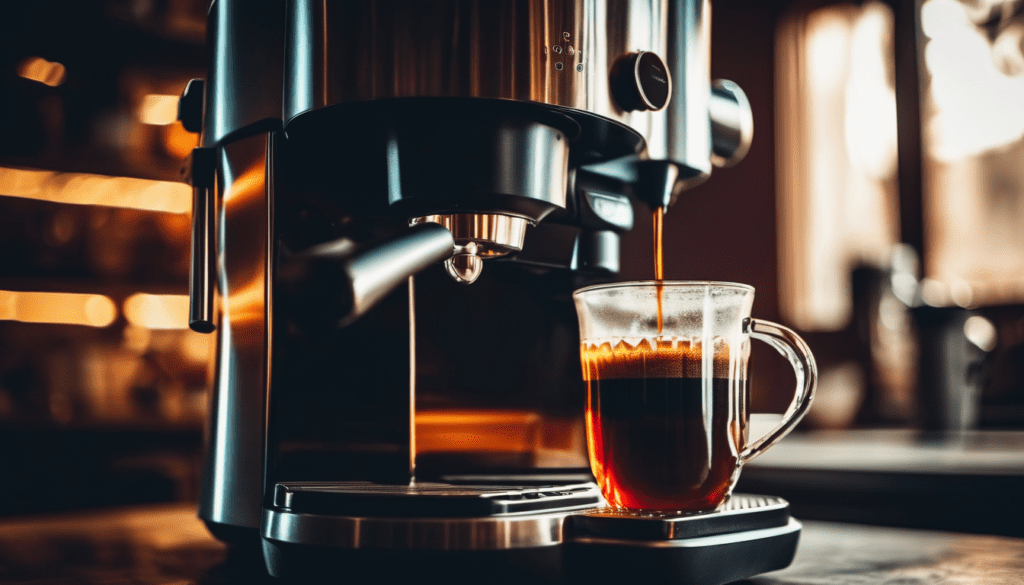
A drip coffee maker brews coffee through a filter containing ground, coarse coffee beans while boiling water is “dripped” on top. The ground coffee beans are left behind as the liquid passes through the filter into a decanter or coffee pot for serving.
Making drip coffee takes longer than making espresso because hot water is in contact with the ground coffee beans for a more extended period. When comparing drip coffee to pressed coffee, drip coffee can produce coffee in less time because water does not need to be steeped.
- In 2023, 33 percent of coffee drinkers in the United States used a drip coffee maker for daily consumption.
2. French Press Coffee Brewing

The French Press is one of those classic brewing tools that everyone should own at some point in their lives. It’s simple and inexpensive but exudes a certain European Old World charm.
I’m conflicted about the French press. On the one hand, I like that it’s a simple brewing device that doesn’t pretend to be anything more than it is. On the other hand, few people understand how to brew with this device. Often, it hasn’t been thoroughly cleaned, which adds flavor taint to an already disappointing cup.
It is technically possible to make good French press Brewing coffee. You’ll be halfway there if you clean meticulously and pay attention to grind size and turbulence. You want a robust and full-bodied cup of brewing coffee from the French press with no sediment in your cup. It’s a tricky balancing act to master.
The French press uses a mesh filtration screen, which allows a high concentration of lipids to enter the cup. This reduces its vibrancy and clean flavor but adds more oomph that so many crave.
- In 2023, 30% of coffee drinkers in the United States used the French-press coffee maker for their daily consumption.
Related Post: Hot Trendy Drinks
3. Espresso Brew Method
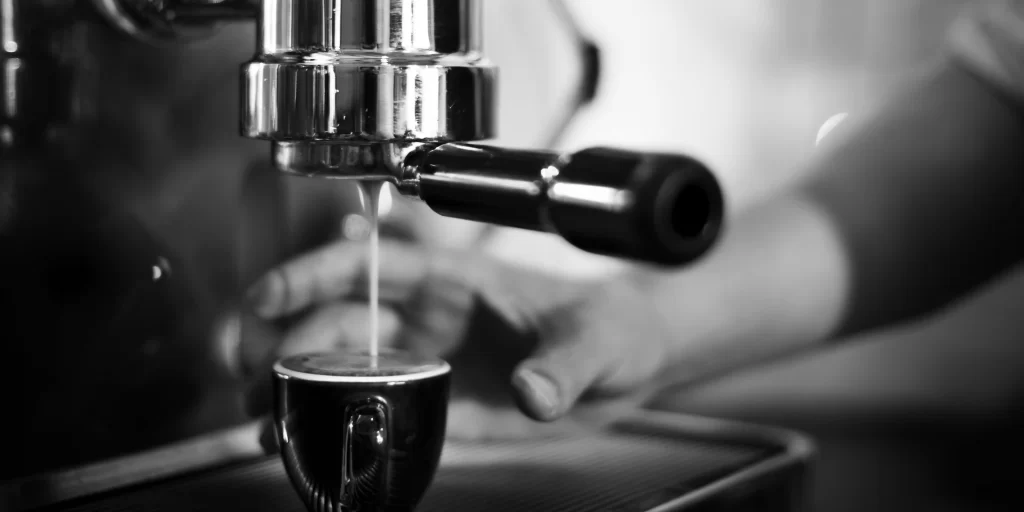
An espresso machine produces Espresso Brew by forcing a small amount of super-pressurized hot water through a compacted ‘puck’ coffee grounds. After only seconds of extracting the solubles from the feet, one or two tiny, highly concentrated coffee shots are produced.
Espresso coffee has a whole body, caramel notes, and a strong flavor. However, the caffeine content isn’t quite as potent because of the lower brewing temperature and shorter contact time between the grounds and the water. It’s also a thicker coffee with a signature layer of foam (crema) on top.
Aside from the equipment, which is an expensive investment, there is an art to making a good espresso. Professional baristas can spend years, if not decades, perfecting their craft.
- The number of people who consume espresso in 2023 will be 19%.
4. The Pour-Over Coffee Brewing

If you want a delicate, lighter-bodied coffee brewing that gives you (almost) complete control over the flavor of your cup, a classic pour-over coffee is for you.
It’s made by placing a simple filter cone over a coffee brewing cup or carafe, filling it with ground coffee, then pouring hot water over it and allowing it to drip through. It’s a popular method among baristas, and one of Merika’s baristas uses it when she wants to delicately extract all of the coffee’s tasting notes.
“The paper filter in a pour-over removes some of the heavy oils.” “You have control over the speed of the pour and the number of rounds of pouring,” Huggins explains. “I like having that level of control.”
Pour-overs require even more precision regarding grind size, water temperature, and coffee-to-water ratio. For greater accuracy, baristas recommend using a burr grinder (manual or electric) and a gooseneck kettle. A short brew time will result in coffee brewing that tastes salty and sour, while a long brew time will result in a brewing coffee that tastes bitter, ashy, and burnt.
- 41% of coffee drinkers in the United States prefer to brew their coffee using a drip coffee maker.
Related Post: coffee shop health and safety policy
5. Cold Brew Coffee
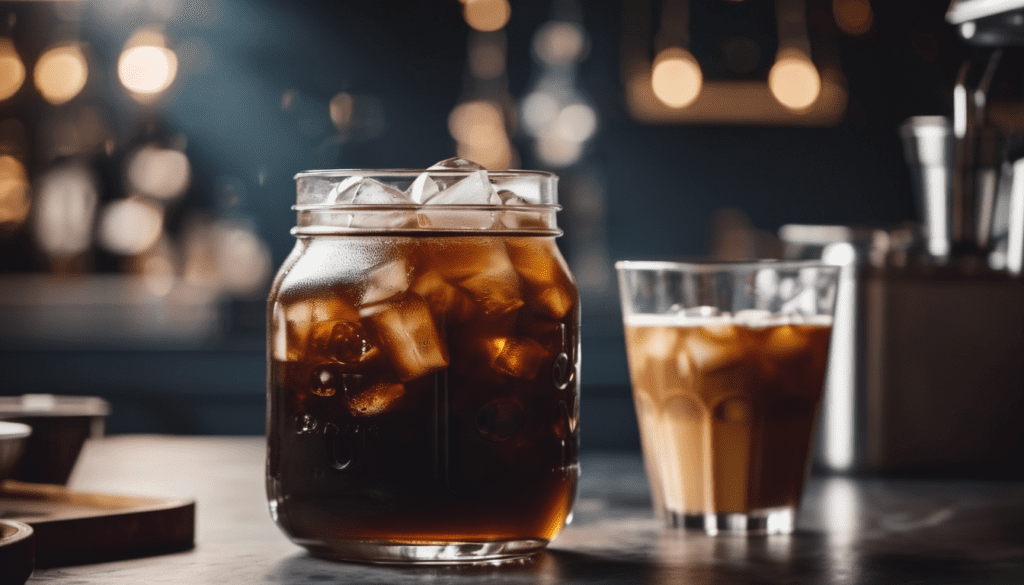
Cold brew coffee, also known as cold press coffee, has long been a favorite in cafés and, more recently, at home. However, it is expected to boom in the coming months as a refreshingly crisp beverage, perfect for when the heat is on. Cold brew is a great way to use old coffee beans, and it’s surprisingly simple and hands-off. Begin with a container and a filter, such as a mason jar and a fine mesh sieve.
Medium-to-fine ground brewing coffee is soaked in cold or room-temperature water and occasionally stirred. Depending on where it is stored, the mixture is strained after 8 to 24 hours to extract the coffee concentrate. The prolonged infusion is what distinguishes cold-brew coffee from iced coffee. The flavor profile you get with cold brew depends on the type of coffee used, and it can range from chocolaty to fruity. Although cold brew is less caffeinated than hot brew, it is the least acidic coffee, making it gentler on the stomach for those with digestive issues.
- The global cold-brew coffee market was worth USD 650.91 million in 2022 and is expected to grow at a CAGR of 23.74% from 2023 to 2032.
6. Turkish Coffee
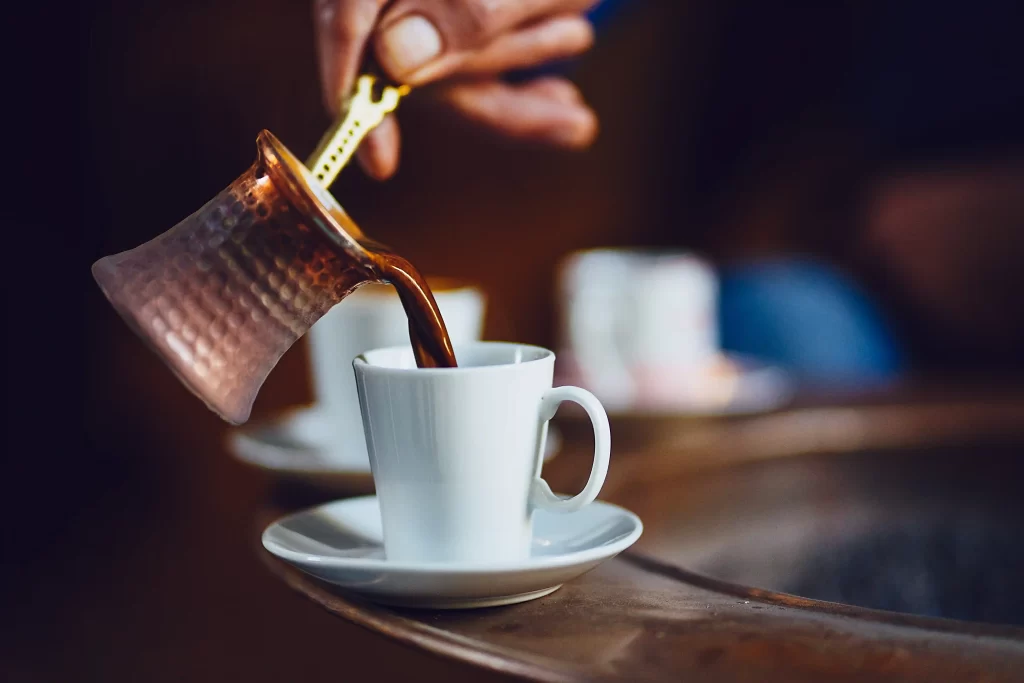
The world’s first method of brewing coffee dates back to the mid-1550s. Turkish coffee brewing is traditionally made in a cezve (ibrik), a wide-mouthed, long-handled brass or copper pot, which includes water, roasted beans ground to a fine powder, and optional sugar and spices. After mixing, the pot is brought to a boil, and the coffee brewing begins to foam. After pouring, the brew is allowed to cool while the grounds settle to the bottom of the cup. The payoff is a rich, robust, and velvety coffee brewing that retains more flavors and aromas than a French press. Aside from that, it’s meant to be sipped rather than gulped.
After reading this article about the various methods of brewing coffee, it can also be beneficial to know about the pairing of coffee with sweets and desserts. What can be more satisfying than a cup of brewing coffee with a plate of your favorite cakes and desserts? I recommend you look at our article on the most popular sweets you can try to have the best savory paired dessert for yourself.
Related Post: clean coffee shop
FAQs:
Method: Select your brewing method, which will most likely be one of several options (batch, pour-over, immersion, hybrid, vacuum, espresso).
Grinding: Always grind right before brewing.
Ratio: …
Water: …
The technique is…
Medium for filtering:…
Freshness.
The “Golden Ratio” is a general guideline that states one to two tablespoons of ground coffee for every six ounces of water. Individual taste preferences can be accommodated. Check your brewer’s cup lines or indicators to see how they actually measure.
- Turkish
- Espresso
- Pour-over
- French-press
- Cold-Brew
- Drip-coffee
When homebrewing beer, temperature is an important consideration. A temperature that is too high can cause off-flavors in your beer. If the temperature is too low, the fermentation process will be slowed, and the taste of your final product will suffer.

+10 Best Cafe Events Ideas To Make Your Customers Even Happier!
It would seem a thorough job to arrange some cafe events’ ideas to attract many new customers and keep the old ones more satisfied. As a cafe owner, unless you

2024 Dessert Trends: Great 5 Sweetie Pastries of This Year to Bite-on!
Nothing is more satisfying than a hot chimney cake freshly baked and served after the morning black cup of coffee or a hot Bagal to fill your afternoon delicacy! For

Top 6 Things Your Customers Want From a Café Location
When choosing a café location to spend their time at, customers have specific preferences that can significantly influence their decision. Cafe owners or investors must also consider cafe location concerns,

